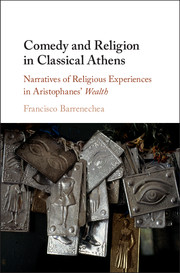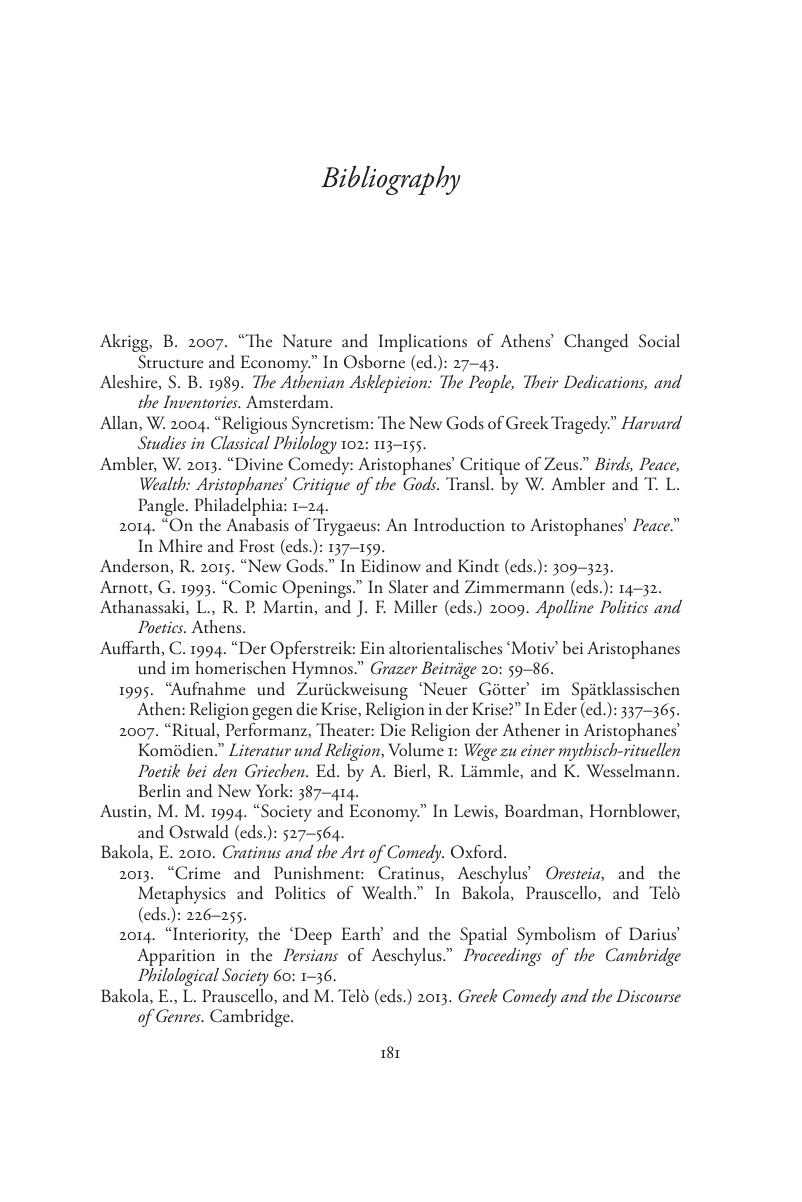 Comedy and Religion in Classical Athens
Comedy and Religion in Classical Athens Book contents
- Comedy and Religion in Classical Athens
- Comedy and Religion in Classical Athens
- Copyright page
- Contents
- Figures
- Acknowledgments
- Notes on Translation
- Abbreviations
- Introduction
- Chapter 1 Numinous Wealth
- Chapter 2 An Apollonian Beginning
- Chapter 3 A Healing Story
- Chapter 4 A Household Shrine
- Chapter 5 A New God Arrives
- Conclusion
- Bibliography
- Index
- References
Bibliography
Published online by Cambridge University Press: 16 July 2018
- Comedy and Religion in Classical Athens
- Comedy and Religion in Classical Athens
- Copyright page
- Contents
- Figures
- Acknowledgments
- Notes on Translation
- Abbreviations
- Introduction
- Chapter 1 Numinous Wealth
- Chapter 2 An Apollonian Beginning
- Chapter 3 A Healing Story
- Chapter 4 A Household Shrine
- Chapter 5 A New God Arrives
- Conclusion
- Bibliography
- Index
- References
Summary

- Type
- Chapter
- Information
- Comedy and Religion in Classical AthensNarratives of Religious Experiences in Aristophanes' <I>Wealth</I>, pp. 181 - 194Publisher: Cambridge University PressPrint publication year: 2018


